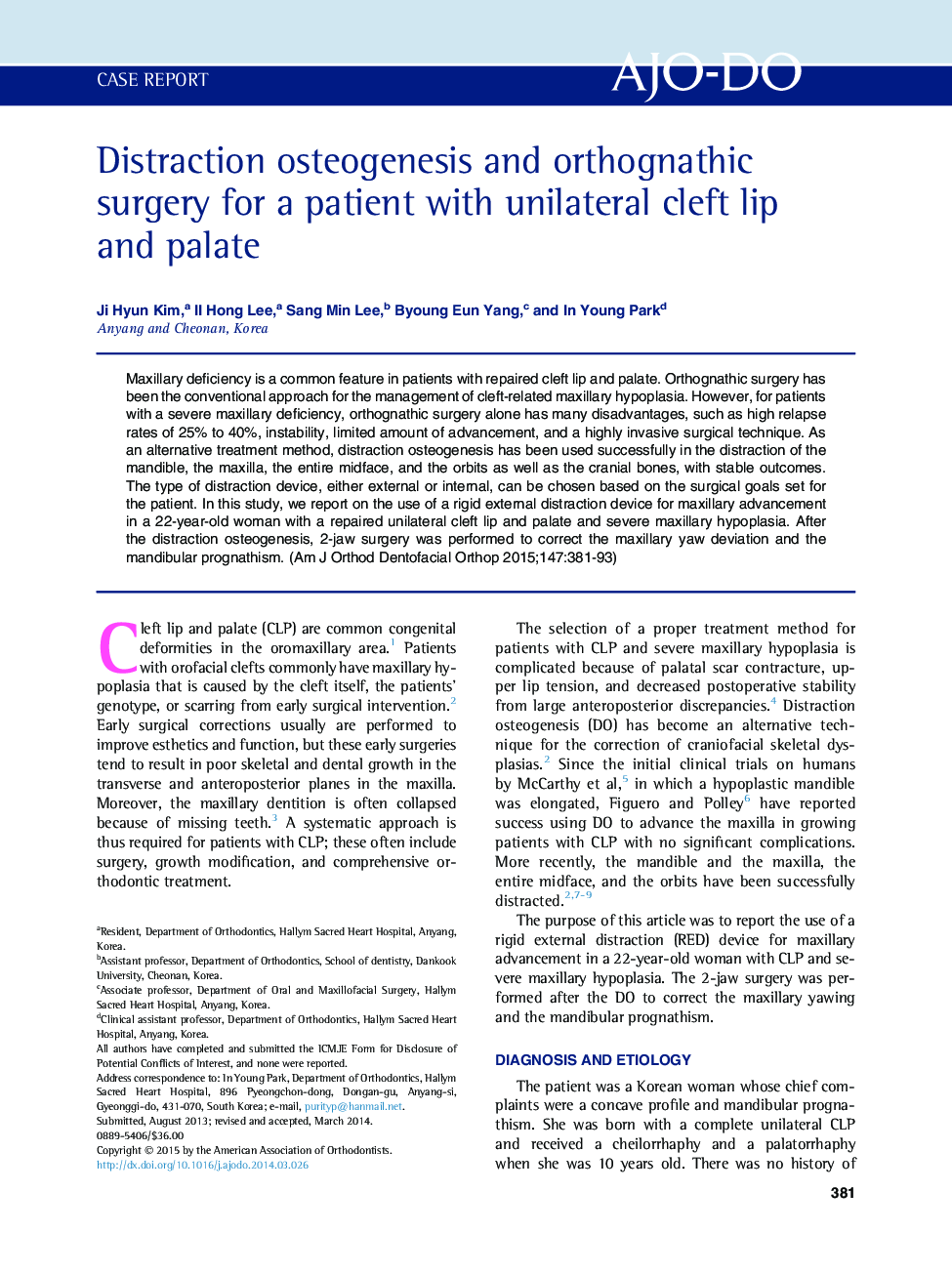| Article ID | Journal | Published Year | Pages | File Type |
|---|---|---|---|---|
| 3115836 | American Journal of Orthodontics and Dentofacial Orthopedics | 2015 | 13 Pages |
•Distraction osteogenesis (DO) can be an efficient treatment modality in the management of cleft-related maxillary hypoplasia because it promotes correction of both the bone and the soft tissue simultaneously.•Even in cases in which orthognathic surgery is inevitable, performing DO beforehand could reduce the amount of surgical movement during the surgery.•If a proper distraction vector is applied and overcorrection with regard to relapse and good retention is accomplished, DO can be used successfully in the treatment of cleft patients.
Maxillary deficiency is a common feature in patients with repaired cleft lip and palate. Orthognathic surgery has been the conventional approach for the management of cleft-related maxillary hypoplasia. However, for patients with a severe maxillary deficiency, orthognathic surgery alone has many disadvantages, such as high relapse rates of 25% to 40%, instability, limited amount of advancement, and a highly invasive surgical technique. As an alternative treatment method, distraction osteogenesis has been used successfully in the distraction of the mandible, the maxilla, the entire midface, and the orbits as well as the cranial bones, with stable outcomes. The type of distraction device, either external or internal, can be chosen based on the surgical goals set for the patient. In this study, we report on the use of a rigid external distraction device for maxillary advancement in a 22-year-old woman with a repaired unilateral cleft lip and palate and severe maxillary hypoplasia. After the distraction osteogenesis, 2-jaw surgery was performed to correct the maxillary yaw deviation and the mandibular prognathism.
